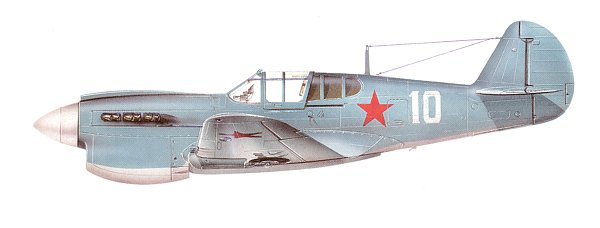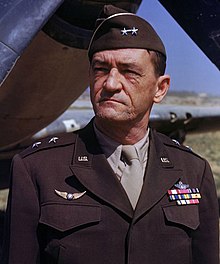The Case of the Phantom P-40 the Ghost Plane!

War is filled with many gut wrenching tales of death and survival. The horrors of man’s inhumanity to man unfold in the bloody pages of history, and it seems there’s no end to the lessons that should have been heeded that were instead ignored. Strangely, out of the fog of war also come the supernatural tales of the inexplicable that can never be solved. Only the weird aura of such stories hangs over the battlefields and in the air like the smoke of gunfire lingering for those who dare to inquire, and so it is with the legend of the “Phantom P-40” a World War II ghost ship story.
Some of us have heard the stories of B-17’s coming back from raids over Germany without a crew, and even landing by themselves while the widows of dead pilots report being visited by their former fighting man spouse now deceased due to war. We’ve heard of disappearing war ships such as the USS Eldridge seen in two different geographic locations. We have heard of soldiers in fox holes seconds before an artillery shell lands where they are dug in, jumping out when warned by the voice of Jesus to vacate their position just in time!
Much like the legend of the “Flying Dutchman” a ghostly harbinger of shipwrecks whenever spotted by a ship’s mate prior to their tragedy, comes the bizarre tale of a Pearl Harbor era Curtis Warhawk and its wounded pilot making a dramatic entrance into the real world from an unknown battle just to leave the witnesses stunned and amazed! This incident is known by other names for the ghost flyer such as “The Ghost Plane from Mindanao” “The China Ghost Ship” “The Phantom P-40” “The Ghost Plane” and “The Ghost Ship”.

There are basically three versions of the same plane occurring in different locations of the Pacific during the early years of the war. Version number 1 claims that on December 8, 1942 US pilots Johnny Hampshire and Bob Scott watched as an unidentified plane approached from the direction of Formosa. Stationed in China at Kienow, the two aviators saw a P-40 coming at them. Fearing it was a Japanese trick the pilots fired warning shots at the aircraft but it made no attempt to escape or to take aggressive action so they flew alongside the mystery plane. What they saw shocked them. It was an old model P-40B with obsolete pre-1941 Pearl Harbor fleet markings on the tail. The plane was badly shot up! Riddled with bullets, the canopy was almost shot away, the right aileron was gone, and there was no landing gear under the wings!
The pilot’s head was slumped forward on his chest and he had obviously been wounded. As they flew alongside they lost sight of the shot up P-40B in a cloud bank and later observed the badly damaged P-40 crash in a nearby rice paddy. Who was the pilot and where did he come from? Japanese military records show that an American P-40 was over Formosa that day, but details from there are sketchy.
In mystery version II
Pearl Harbor radar picks up an unknown target approaching and two pilots get aloft to identify who the bogey. Recognizing that an old P-40 with markings that hadn’t been used since the attack on Pearl Harbor by the Japanese in 1941 the two pilots fly alongside. What they see to be a badly shot up fighter plane with a wounded pilot with fresh blood on his shoulder and chest. The wounded aviator briefly lifts his head, smiles at his two allied aviator comrades, and even makes a weak hand gesture when his stricken Warhawk plunges to the ground, crashing with a terrible roar.
Soldiers and naval personnel swarm the wreck and find an unidentified pilot without any dog tag or papers, there are no serial numbers on the plane, and only part of a diary can be found. The nearest point of possible contact from any possible launch point is 5,400 miles away from Oahu, and it is far beyond the range of a P-40 even with additional drop tanks on the wings. Once again, a phantom aircraft with an unknown flyer in the cockpit. There was knowledge of one P-40 and a mechanic crew of 11 men on the island of Mindanao where the Americans had escaped first Corregidor after the Japanese attacked, then retreated to Bataan just before the infamous Bataan Death March after the island had been captured, and now this small unit of survivors had an incomplete P-40, one pilot, and the mechanics who had escaped along with him, but the distance was impossible!
Third Version
As told by General Robert Lee Scott, an army pilot by the name of Corn Sherrill managed to escape the Japanese invasions of Corregidor and Bataan along with eleven mechanics. On the island of Mindanao they remained hidden and working on trying to restore a partially damaged P-40 Warhawk. Aided by Moro Tribesmen, they managed to procure an intact set of wings from another P-40 some distance away that had to be moved several miles to where the mechanics were working on the engine and fuselage. They managed to assemble a plane with six 50 caliber machine guns, several 500 pound bombs, and fashioned some bamboo skis for landing gear so that the plane could take off. The Americans and Moro Tribesmen managed to clear a primitive 5000 foot runway for Lieutenant Corn Sherrill to take off on.

On the morning of December 8, 1942 fully armed, the P-40B managed to take off from the cleared runway with a course and heading set for the island of Taiwan and a Japanese air base stationed there. Pilot, Corn Sherrill made the incredible distance with only an additional 50 gallon tank especially when considering he was carrying 4 five hundred pound bombs. As he flew over the base he saw nothing but Japanese warplanes neatly lined up in rows and began his strafing run shooting up dozens of aircraft and igniting them like match boxes. He even managed to deliver 1 five hundred pounder right into the Commander's head quarters blowing it to bits before attempting to escape. Despite attempts by the several Japanese Zero's to intercept his P-40 Warhawk, Sherrill eluded his assailants and headed back leaving a ravaged and burning enemy air base behind him.

Having completed what could easily have been a suicide mission, Sherrill, now running low on fuel, headed for a friendly allied base in China. Sadly, the pilot in his shot up P-40B and probably wounded is intercepted by 2 American pilots and shot down by friendly fire! The Warhawk went down in Japanese territory so a patrol of pilots and GI's set off to retrieve some records and identity of the pilot. Among those was one young officer Robert Lee Scott. They found the wreck but could only locate a partially burned diary, no papers, no identifying unit numbers. As they were about to exhume the pilot, they were discovered by a Japanese patrol and had to flee the site. Once again, mystery plane, mystery pilot, and impossible explanation!

For being a supposed mythical yarn made up in war time this legend has survived the test of time having been written about in Reader's Digest in 1945, Time Magazine in the 1940's, Yankee Magazine, Air Classics, Aviation History, and a number of newspapers in the westen US. What has come to light is the testimony of one Milton McMullen, a man who survived the Bataan Death March after the Japanese invasion of Corregidor and Bataan along with being a POW under the cruelty of the Japanese Imperial forces. McMullen claimed to be one of the actual mechanics who worked on the Phantom P-40 on Mindanao who got the fighter plane airworthy for it's attack on Formosa and the enemy air base there. In 2005 he was one of only 4 survivors of a 350 man unit that worked on military air services who were captured, died at the hands of the Japanese or later on in life after the war. Of his 350 man unit, by the end of the war, only 25 were left to be liberated from the horrors of the Japanese prison camp.

When World War II began the US had only the P-40 Warhawk, the F-4 Navy Wildcat, the Obsolete Boeing P-26 fighter, the inadequate Brewster Buffalo, and the P-36 which was a older version of the P-40 that had not been improved for better performance. Japan and Germany had been making war for years and had perfected their bombers, their fighters, and their air combat tactics where as many US pilots had minimal flying time and even less air combat training. The P-40 Warhawk was the only thing standing in the way of the Axis forces and having been designed as a ground support warplane it did more than what was expected of it, being used by Allied forces from Great Britain to Russia, from the Chinese Air Force, to India in its fight to stop the Japanese in Burma. It was the P-40 in the hands of the Flying Tigers and Commander, Claire Chennault, who racked up more kills with 298 verified shoot downs and a 21 to 1 kill ratio that distinguishes the Curtis P-40 as having the greatest recorded kills of any air combat unit in US history.

"Destroying the New World Order"
THANK YOU FOR SUPPORTING THE SITE!
Latest Activity
- Top News
- ·
- Everything
KILL THE MESSENGER - Hero Journalist Featurette - In Theaters Friday
A Masterclass Is Being Played Out For Those Who Have The Eyes To See
City of Joel - Official Trailer
© 2026 Created by truth.
Powered by
![]()
You need to be a member of 12160 Social Network to add comments!
Join 12160 Social Network